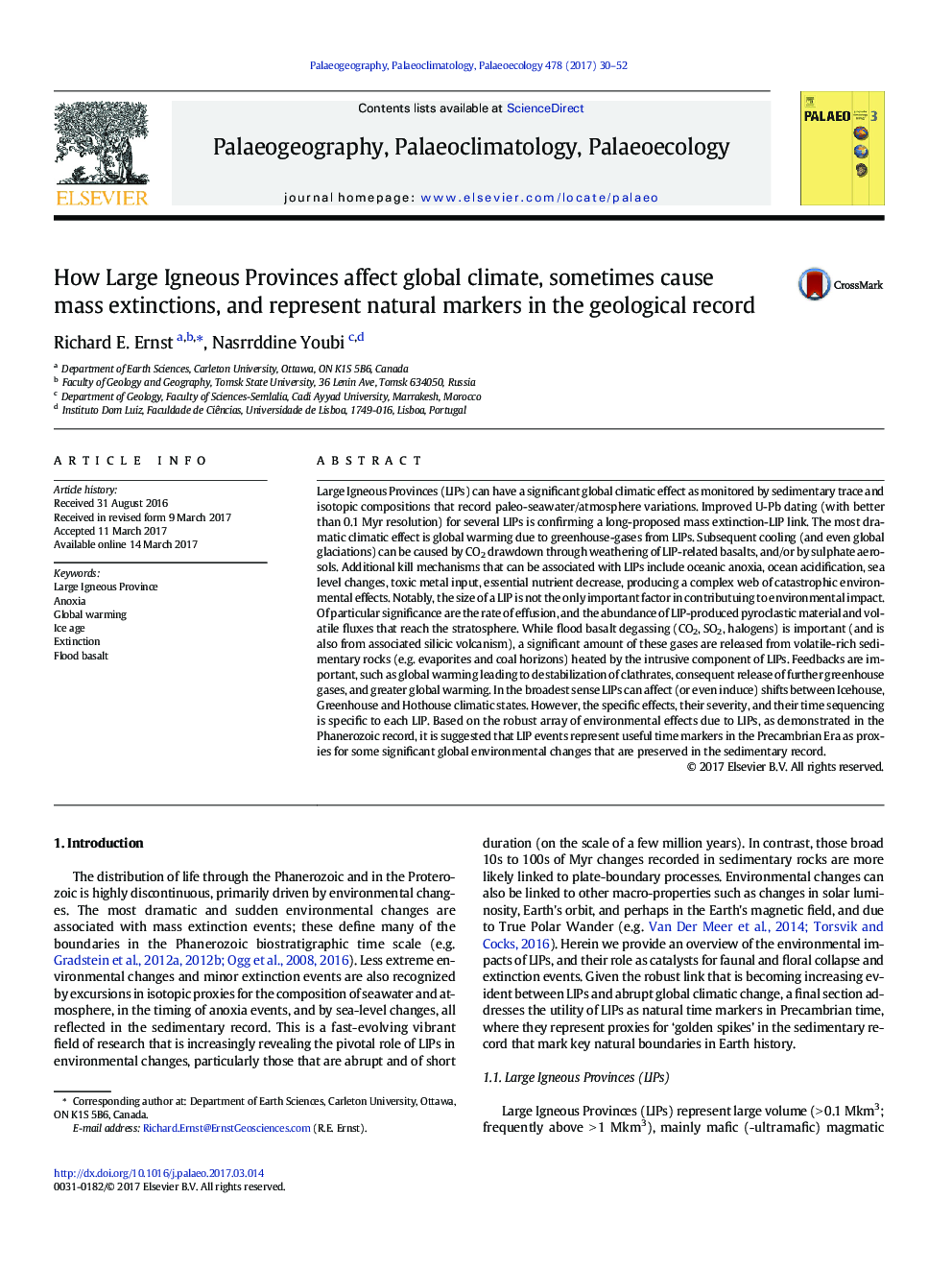| کد مقاله | کد نشریه | سال انتشار | مقاله انگلیسی | نسخه تمام متن |
|---|---|---|---|---|
| 5755818 | 1622114 | 2017 | 23 صفحه PDF | دانلود رایگان |
عنوان انگلیسی مقاله ISI
How Large Igneous Provinces affect global climate, sometimes cause mass extinctions, and represent natural markers in the geological record
ترجمه فارسی عنوان
استان هایی که به اندازه کافی بزرگ هستند بر آب و هوای جهانی تاثیر می گذارند، گاهی اوقات باعث انقراض تودهای می شوند و نشانگرهای طبیعی در رکورد زمین شناسی هستند
دانلود مقاله + سفارش ترجمه
دانلود مقاله ISI انگلیسی
رایگان برای ایرانیان
کلمات کلیدی
موضوعات مرتبط
مهندسی و علوم پایه
علوم زمین و سیارات
فرآیندهای سطح زمین
چکیده انگلیسی
Large Igneous Provinces (LIPs) can have a significant global climatic effect as monitored by sedimentary trace and isotopic compositions that record paleo-seawater/atmosphere variations. Improved U-Pb dating (with better than 0.1Â Myr resolution) for several LIPs is confirming a long-proposed mass extinction-LIP link. The most dramatic climatic effect is global warming due to greenhouse-gases from LIPs. Subsequent cooling (and even global glaciations) can be caused by CO2 drawdown through weathering of LIP-related basalts, and/or by sulphate aerosols. Additional kill mechanisms that can be associated with LIPs include oceanic anoxia, ocean acidification, sea level changes, toxic metal input, essential nutrient decrease, producing a complex web of catastrophic environmental effects. Notably, the size of a LIP is not the only important factor in contributuing to environmental impact. Of particular significance are the rate of effusion, and the abundance of LIP-produced pyroclastic material and volatile fluxes that reach the stratosphere. While flood basalt degassing (CO2, SO2, halogens) is important (and is also from associated silicic volcanism), a significant amount of these gases are released from volatile-rich sedimentary rocks (e.g. evaporites and coal horizons) heated by the intrusive component of LIPs. Feedbacks are important, such as global warming leading to destabilization of clathrates, consequent release of further greenhouse gases, and greater global warming. In the broadest sense LIPs can affect (or even induce) shifts between Icehouse, Greenhouse and Hothouse climatic states. However, the specific effects, their severity, and their time sequencing is specific to each LIP. Based on the robust array of environmental effects due to LIPs, as demonstrated in the Phanerozoic record, it is suggested that LIP events represent useful time markers in the Precambrian Era as proxies for some significant global environmental changes that are preserved in the sedimentary record.
ناشر
Database: Elsevier - ScienceDirect (ساینس دایرکت)
Journal: Palaeogeography, Palaeoclimatology, Palaeoecology - Volume 478, 15 July 2017, Pages 30-52
Journal: Palaeogeography, Palaeoclimatology, Palaeoecology - Volume 478, 15 July 2017, Pages 30-52
نویسندگان
Richard E. Ernst, Nasrrddine Youbi,
